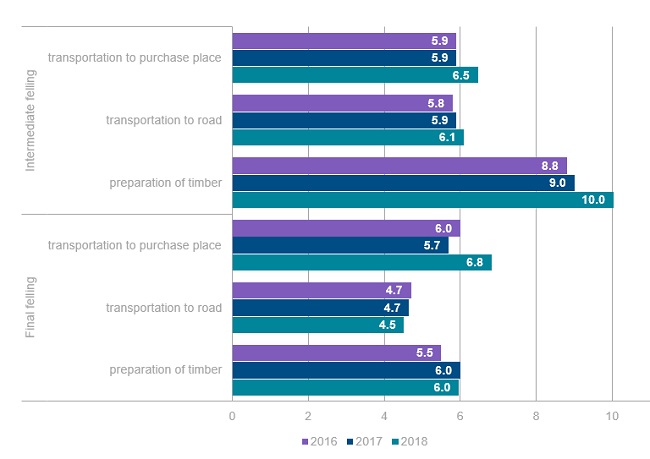Analytics, Latvia, Statistics, Woodwork
International Internet Magazine. Baltic States news & analytics
Sunday, 14.12.2025, 12:35
In 2018, rise in forest regeneration and tending costs observed in Latvia
 Print version
Print versionIn 2018, compared to 2017, the average forest tending costs in Latvia reduced in forests of first and third forest land quality group, while grew in forests of second and fourth forest land quality group. In 2018, the average forest tending costs comprised 199–261 EUR/ha. The highest forest tending costs, which include agro-technical tending of forest and tending of young growths, were observed in the forests of fourth forest land quality group (287.9 EUR/ha, an increase of 14.8%, compared to 2017) and in the forests of second land quality group (260.8 EUR/ha, a rise of 5.7%).
In 2018, compared to 2017, the average harvesting costs of one cubic meter of timber grew slightly in both final felling and intermediate felling. In the final felling, within which the respective part of the forest is felled almost completely, the average harvesting costs rose by 5.0% and constituted 17.3 EUR/m3. Harvesting costs in the intermediate felling (thinning, reconstructive felling and sanitary clear felling), within which the respective part of the forest is fallen partly, increased by 8.8%, reaching 22.6 EUR/m3. The total harvesting costs in final felling and intermediate felling are formed by the labour, transportation, and machinery costs. Wood cutting in the intermediate felling is performed by sampling trees, therefore the total harvesting costs in this felling type are higher than in final felling where almost all trees are cut. In 2018, felling dynamics was influenced by timber prices on the market and winter of 2017 that was unfavourable for felling and works had to be stopped. The higher timber prices on the market, the higher harvesting costs.
Harvesting costs
(EUR/m3, excluding VAT)









 «The Baltic Course» Is Sold and Stays in Business!
«The Baltic Course» Is Sold and Stays in Business!

